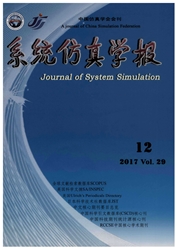

 中文摘要:
中文摘要:
采用健康志愿者的膝关节CT扫描数据,通过医学断层图像处理软件得到骨骼轮廓曲线,并采用商用CAD软件重建包含股骨、胫骨及髌骨的人体膝关节的骨骼三维实体模型。采用MRI(核磁共振成像)图像,选取膝关节相关肌腱、韧带、软骨、半月板等轮廓控制点,提取轮廓,重建包含骨四头肌肌腱、髌腱、内外侧副韧带、前后交叉韧带、半月板以及股骨、胫骨、髌骨软骨在内的软组织三维实体模型。利用重建的膝关节骨组织的CT和MRI扫描点云,采用三雏图像配准的方法,将膝关节各软纽织组装在骨组织实体模型上,从而建立包含人体膝关节主要软组织在内的膝关节仿生模型。建立人体膝关节几何解剖模型,作为进一步力学分析的基础,共同为今后设计膝关节假体及其模拟试验台提供设计依据和评价指标。
 英文摘要:
英文摘要:
A healthy volunteer's knee was selected and acquired by a CT scanner. 3D contours of skeleton, including femur, tibia and patella, were transferred to CAD software to perform surface reconstruction by a method called skinning. With MRI imaging modality, serial sectional MRI images were obtained. Ligaments, tendons, cartilage's, meniscus's boundary curves were selected to reconstruct the three-dimensional contours of Quadriceps tendon, Patella tendon, Tibia collateral ligament, Fibular collateral ligament, Posterior cruciate ligament, Anterior cruciate ligament, Meniscus and Femur, Tibia, Patella's cartilage. Through registration of point clouds reconstructed from CT and MPd modalities, soft tissues were assembled to bone structure solid model, and in this way bionic model was successfully established. After 3D solid bionic model of knee joint was built up, and a foundation for further mechanical analysis was laid. Knee joint prosthesis and simulation test-bed were designed by all above.
 同期刊论文项目
同期刊论文项目
 同项目期刊论文
同项目期刊论文
 Comparison of tribological behavior of nylon composites filled with zinc oxide particles and whisker
Comparison of tribological behavior of nylon composites filled with zinc oxide particles and whisker Biotribological behavior of ultra high molecular weight polyethylene composites containing bovine bo
Biotribological behavior of ultra high molecular weight polyethylene composites containing bovine bo Research on the structure characterization and the biotribological behaviors of PVA/HA composite hyd
Research on the structure characterization and the biotribological behaviors of PVA/HA composite hyd Research on the Long Time Swelling Properties of Poly (vinyl alcohol)/Hydroxylapatite Composite Hydr
Research on the Long Time Swelling Properties of Poly (vinyl alcohol)/Hydroxylapatite Composite Hydr Research on the friction and wear mechanism of poly(vinyl alcohol)/hydroxylapatite composite hydroge
Research on the friction and wear mechanism of poly(vinyl alcohol)/hydroxylapatite composite hydroge Biotribological behavior of ultra high molecular weight polyethylene composites filled with nano-ZrO
Biotribological behavior of ultra high molecular weight polyethylene composites filled with nano-ZrO Load Dependence of Nanohardness in Nitrogen Ion Implanted Ti6Al4V Alloy and Fractal Characterization
Load Dependence of Nanohardness in Nitrogen Ion Implanted Ti6Al4V Alloy and Fractal Characterization 期刊信息
期刊信息
